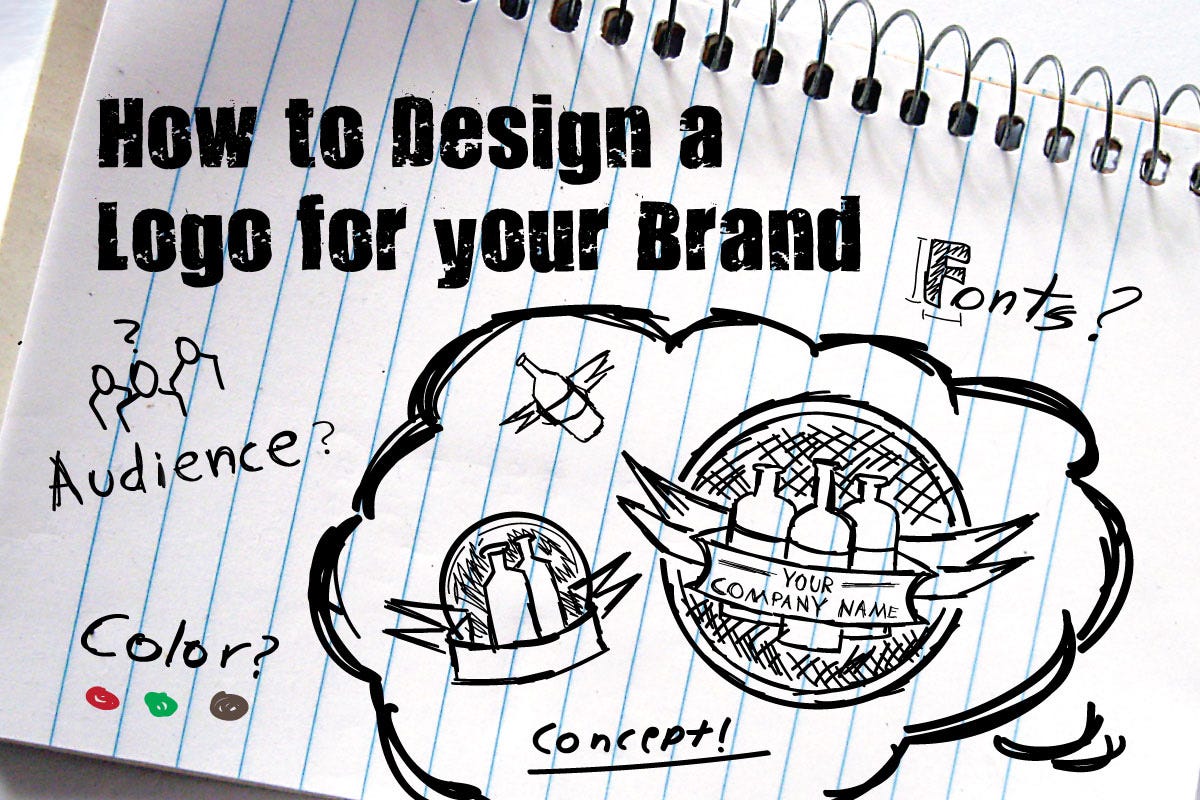How to Design A Logo For Your Brand
- May 2, 2016

Creating a logo is probably the most important step in building your business. It's certainly the most important first step in creating a brand that lasts.
When you first set out to design a logo for your brand, there's a lot of pressure. It's especially daunting when you're probably finalizing your business plan, working on getting a loan for your new business, and juggling about a thousand other tasks at the same time.
So the graphics department has teamed up with us here in marketing to deliver this guide to branding a logo. Following this process will help you exercise your creativity and create a logo for your brand that will resonate with your customers.
Step 1: Think About Your Market
In order to design a logo that people will love, you have to recognize who you want to love your logo. Who is going to be using your product or service the most? These are the people that are most likely to turn into brand ambassadors, so designing with them in mind is key.
Get a notepad out and write down the traits of your audience. For example, if your business offers an extreme camping expedition service, you're going to be marketing to hardcore outdoor enthusiasts. Traits that define your audience would be things like high-energy, rugged, environmentally-conscious, etc.
You'll know your audience best. If you get stuck, think of only 1 or 2 specific people that love your product and write down their traits. Simplify the list you come up with into 3-4 main themes.
Also, write down other brands that your audience loves. This will help gain insight into what connects best with them. Look for themes throughout the brands.
Step 2: What Do They Like About You?
After you've got an idea of who your audience is, pin down the things that they like (or will like) about you. These can include tangible things - think value propositions - or they could be more intangible - a great personality.
If you have customer reviews, leverage these and come up with a list of unique things they mention.
Step 3: Choose A Color Scheme
Now that you're armed with this ammunition, you can get into some detail about your logo. Choose a color scheme that reflects the things you've written down.
Here's a quick summary of color psychology to help:
Black - Authority, strength and intelligence.
White - Purity, cleanliness and safety.
Gray - Practicality & subtlety.
Red - Movement, excitement, romance and passion.
Yellow - Happiness and youth.
Orange - Fun, excitement and creativity.
Green - Calmness, growth, harmony and associated with nature & money.
Purple - Power, nobility, ambition and luxury.
Blue - Depth, stability, trust & confidence.
Step 4: Brainstorm Artwork Concepts
When you're first starting to brainstorm, anything and everything goes - no matter how crazy it may seem. Think about animals, natural elements, abbreviations, icons, and basically anything that is a noun that could be used to represent your brand.
Once you've written down at least a dozen ideas, take a deep breath, go for a walk and come back to your ideas with fresh eyes.
Chances are you'll need to go through this process a few times to narrow it down to a few legitimate possibilities.
Step 5: Pick 3 Favorites
Now you need to pick a few favorites. Do not choose just one design or concept. If you only have one that you think will work, keep brainstorming! It's key to have a few to choose from.
If there are multiple people involved in the process, take votes on favorites.
Once you have 3 concepts or designs, you're ready to move on.
Step 6: Simplify Your Concepts
Now it's time to trim out anything unnecessary from your design. Think about the most iconic logos in the world - they typically are comprised of a maximum of 3 elements. Usually they are just two - an icon and the brand name. There's a reason these work so well - people don't have time to take in or remember a complicated logo!
Step 7: Get Feedback From Your Target Audience & Let Them Choose!
Now it's time to see what works best with your audience.
Put your designs out in front of potential customers. Some methods to try here are to show them for a few seconds and then take them away. After taking each away, have the customer describe or draw the logo. This will help you see which ones stuck with customers the best.
It will likely be pretty clear what the winner is. Once one is chosen, you have just one last step...
Step 8: Create Your Final Version
The final version of your logo should be created in a vector environment like Adobe Illustrator. This will allow your artwork to be resized, scaled and changed seamlessly so you can use it across a variety of media.
If you aren't able to create a vector version of your logo yourself, it is worth hiring a graphic designer to do so for you. Just make sure to request the original working file. This will help you avoid an immense amount of frustration as your company grows and your logo has to be applied in many more places like custom labels or packaging, advertising and more.
So there you have it, our guide to creating a logo for your brand that will stand the test of time. If you follow these steps, you'll be able to create a strong logo that truly captures the essence of your brand. That's the type of thing that is invaluable and will keep customers coming back time and time again.

 Save 10% off your first LabelValue order |
Save 10% off your first LabelValue order |